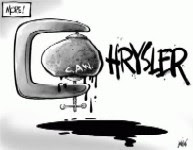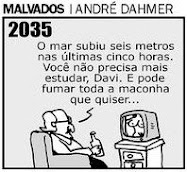Nothing more than collecting a bit of flotsam around an article in the Globe yesterday: The real fat cats of the auto industry by Neil Reynolds.
 From Ken Lewenza in Wikipedia: ... Lewenza dropped out of high school after Grade 10, at age 16, ... Lewenza drives a Dodge Nitro.
From Ken Lewenza in Wikipedia: ... Lewenza dropped out of high school after Grade 10, at age 16, ... Lewenza drives a Dodge Nitro.Dodge Nitro at the Dodge/Jeep/Chrysler site, and Wikipedia, and Carseek: Recent Dodge Nitro Review (2007).
A clear winner in all dimensions.





 "GM's pension fund is in trouble largely because of the failure of provincial pension regulations, and GM has paid a very substantial proportion of the premiums that have been collected over the years by the Pension Benefit Guarantee Fund. So, for the government to now suggest that retired autoworkers would be denied the protection of this fund is unconscionable."
"GM's pension fund is in trouble largely because of the failure of provincial pension regulations, and GM has paid a very substantial proportion of the premiums that have been collected over the years by the Pension Benefit Guarantee Fund. So, for the government to now suggest that retired autoworkers would be denied the protection of this fund is unconscionable."Sure, except that I remember hearing the news 25 years ago that GM was already sinking under the combined strains of pension funds and health coverage. Whatever.
"We welcome the opportunity to join with other industry players in rebuilding the auto industry." (CAW President Ken Lewenza Calls for Increase to EI, CAW site, November 27, 2008.)
Rebuilding!? Doh! The movie will have to be called Jurassic Park XXIV!
There is a Christian/Anarchist myth that everyone will learn to read the Bible and be good and that eventually laws and politics will no longer be required. Engels & Marx had a similar notion that the state would eventually 'wither away'. Every Left-Lib & every Democrat has comparable ideas about universal sufferage and so forth.
But some people are smart and most are not. I wonder when eventually will begin?
The Ken Lewenzas, Jr. & Sr., look to me like good men, good people. My problem is that demotic (Of, pertaining or proper to, the common people; popular, vulgar.), one of Northrop Frye's ages or phases or modes (see below), reminds me strongly of daemonic (Of, belonging to, or of the nature of, a demon or evil spirit; demoniacal, devilish.) - no connection of course, just an overly simple symmetry.
From, Frye's The Great Code, page 5:
"This question took me to Vico, the first person in the modern world to think seriously about such matters. According to Vico, there are three ages in a cycle of history: a mythical age, or age of gods; a heroic age, or age of an aristocracy; and an age of the people, after which there comes a ricorso or return that starts the whole process over again. Each age produces its own kind of langage giving us three types of verbal expression that Vico calls, respectively, the poetic, the heroic or noble, and the vulgar, and which I shall call the hieroglyphic, the hieratic, and the demotic."
Meanwhile:
 The point seems misdirected to me. What would be understandable would be joy at the demise of both CAW & Chrysler. The notion that either of them can be rehabilitated into servers of humanity and the planet is, well ... far-fetched.
The point seems misdirected to me. What would be understandable would be joy at the demise of both CAW & Chrysler. The notion that either of them can be rehabilitated into servers of humanity and the planet is, well ... far-fetched.In the same ambit, as a user of TTC services, an observer, it seems to me that the union is also impeding effective public transport, certainly someting is ... I will look into this.
***************************************************************************
The real fat cats of the auto industry, Neil Reynolds, April 24, 2009.
LABOUR RELATIONS: CAW
OTTAWA -- In his blog on the crisis of Canada's Detroit Three auto makers, political scientist James Laxer (a founder in 1969 of the far-left Waffle group) describes threats of bankruptcy protection by General Motors and Chrysler as "treason" and "betrayal." He uses the warfare metaphors explicitly, deliberately. Bankruptcy, he says in the April 17 posting, is a weapon "to bludgeon workers." It is "a gun" to reverse advances in wages, benefits and working conditions painstakingly gained over decades by the Canadian Auto Workers, which he reveres as "Canada's most effective industrial union."
This is one perspective, not altogether flimflam. An alternative perspective, probably closer to reality, views possible GM and Chrysler bankruptcy protection filings in simple judicial terms - as the prosecution of an egregious bunch of wage fixers whose conspiracy to rig the price of labour should have been regarded as criminal from the very beginning. Operating as a kind of union trust, with quasi-monopolistic rights and privileges, CAW negotiations often resembled shakedowns. The case is easily proven: Compare hourly wages in the closed-shop auto unions with hourly wages in competitive environments (all other North American auto makers and many other businesses).
The average hourly paid Canadian worker earns $21.66 an hour, or $45,052 a year (assuming a 40-hour workweek and full-time employment for 52 weeks). This rate doesn't include every fringe benefit but hourly paid workers don't usually get lavish perks - not like Canadian auto workers whose hourly labour costs (fringe benefits included) now exceed $72 an hour by some measures, or $150,000 a year. The CAW regards the $72-an-hour calculation as unfair. So let's arbitrarily use $60 an hour instead, or $124,800 a year.
We hear progressive anguish about the income gap between hourly paid men ($23.44 an hour, $48,755 a year) and women ($19.83 an hour, $41,246 a year) - but not about the gap between Detroit Three auto workers and everyone else who is paid by the hour. This alone is suspicious. Where are the pay equity people when you need 'em? Further, Statistics Canada says the average hourly paid worker gets only 30 hours of work a week. Thus the average hourly paid woman earns $594.90 a week, $30,934 a year - one-quarter as much as the average Big Three auto worker, male or female.
Pay equity programs are based on the premise that employers should pay men and women comparable wages for comparable work. You can't quite equate auto industry assembly line work with dentistry, for example - though the average dentist earns $60 an hour, too. You can't quite equate assembly-line work with scientific research - though the average scientist earns only $50 an hour. But why can't you equate the auto industry truck driver, who earns $19 an hour, with the assembly line worker?
Because the North American auto industry is fully integrated, hourly wage rates in one place can't significantly exceed hourly rates in other places without loss of competitive edge. The U.S. Bureau of Labor Statistics collects wage data on all companies "associated with the production, wholesaling, retailing and maintenance of motor vehicles." It publishes average hourly rates for all sectors of the industry without regard to the nationality of the cars (Canadian or American, European or Japanese), or to the union status of the workers (closed or open shop).
In competitive environments, you don't need bankruptcy proceedings to adjust union contracts or other conditions of employment. Recession suffices. A year ago (March, 2008), 918,300 hourly paid U.S. workers were engaged in the manufacture of cars and trucks. The number now (March, 2009) is 711,200, a decline of 207,100. A year ago, about 1.89 million hourly paid U.S. workers were engaged in automobile dealerships and in auto parts sales (both wholesale and retail). The number now is 1.73 million a decline of 160,000. A year ago, 858,300 hourly paid U.S. workers were engaged in auto repair and maintenance. The number now is 815,680, a decline of 42,620.
In March, 2009, the average hourly rate of non-supervisory workers in U.S. car or truck manufacturing plants was $27.43 (U.S.), a decline of $2.53 - almost 10 per cent - from the preceding year. The average hourly rate in the parts industry was $21.25. In vehicle wholesaling, the average was $17.04; in vehicle retailing, $16.06. The average hourly rate of a person working in vehicle repair was $15.32; of a person employed in auto parts retailing was $13.94. And aren't car parts workers as skilled as assembly line workers?
The astonishing thing is that the average hourly rate for all auto workers in the United States is almost precisely the same as the average hourly rate for all hourly paid people in Canada, regardless of industry. The average U.S. auto industry rate for all hourly paid jobs in the industry: $22.01 an hour. The average Canadian rate for all hourly paid jobs in all industries: $21.66 (Canadian). (We're ignoring exchange rate differences, which move inexorably up and down.) Note that the auto companies that pay competitive rates aren't standing in line to file for creditor protection.
The verdict on Canada's most effective union: Guilty as charged. GM and Chrysler are guilty, too, of course. They shouldn't have stood there meekly, for all these years, with union "guns" held to their ribs.
***************************************************************************
Recent Dodge Nitro Review, Carseek ('recent' being a relative term - looks like it was done in 2007).
Dodge Nitro
The 2006 Chicago Auto Show was the showplace for the Dodge Nitro, a compact sport utility vehicle that is assigned the same platform as the Jeep Liberty. The Nitro was first sold in the fall of 2006 and was the only compact SUV in the maker's lineup. Since its inception at the auto show, consumers and reviewers have questioned Dodge's decision to give the Nitro a modern, boxy design. Sales have reflected that doubt, and the Nitro is one of the least profitable vehicles for Dodge.
Available with either a 3.7L Powertech V6 or a 4.0L SOHC V6 engine, the Nitro is also one of Dodge's least powerful SUVs on the market. The Nitro also has three transmission choices: a 6-speed manual, a 5-speed 5G-Tronic Mercedes automatic, or a 4-speed automatic. The exterior of the SUV is styled with oversized wheel wells, sharp lines, and a flat hood. Unfortunately, while the design has been well-received in Europe, American buyers have been put off by it. Mostly, consumers and critics alike agree that the sport utility vehicle simply does not fit in the maker's lineup.
More disappointment came for Dodge when the magazine Consumer Reports named the Nitro one of its eleven worst cars for the 2008 model year. The Jeep Liberty was among the ranks as well. Coupled with rumors of a Chrysler bankruptcy (Dodge's parent company), the maker is on shaky ground with consumers. Financial gurus like Jim Cramer are stating that Chrysler is a sure bet for failure. Unfortunately, claims that Bob Nardelli, the Chrysler CEO, is completely incompetent do nothing to help the American maker.
Another rumor floating around is that American manufacturer Ford will take over the minivan division of Chrysler and keep Jeep around, but will phase out all other vehicle models. Regrettably, that would mean an end to the short life of the Dodge Nitro. Most gossip points out that even if another manufacturer absorbed Chrysler into their ranks, they'd still surely get rid of the Dodge Nitro because of poor sales and harsh criticism. No matter what, Dodge claims that a newer, more publicly-accepted Nitro is in the works and will blow the competition out of the water. Nevertheless, reviewers are commenting back that Dodge is simply blowing smoke and has no real resolution for the current rebuffed design. Latest rumors include the addition of a V6 HEMI in the Nitro and a spinoff crossover vehicle that will resemble the Nitro, but will be marketed more to a younger market.
***************************************************************************
CAW President Ken Lewenza Calls for Increase to EI, CAW site, November 27, 2008.
CAW President Ken Lewenza called on the federal government to increase EI benefits to unemployed workers during a recent meeting of all local CAW leadership in the major auto, auto parts and heavy truck sectors of the union in the London area.
Lewenza said government must take immediate action to increase the EI benefit rates and length of terms in order to prevent an even further downward spiral -a real threat with the recession.
The November 26 meeting was convened to provide an overview of the economic crisis and what it means to workers in the auto industry, as well as addressing workers' concerns on pensions. Similar meetings also took place in Windsor and Toronto on November 27 and 28.
Lewenza also said that workers are not to blame for the current crisis that has shaken the auto industry. "This is a knee jerk reaction to blame the union when the industry is struggling," said Lewenza, noting no similar blame was directed at bankers at the time of the Wall Street bailout.
"The union has shown time and time again that it's flexible and willing to take creative approaches when finding solutions," said Lewenza. "We welcome the opportunity to join with other industry players in rebuilding the auto industry."
He noted though that with a crumbling global market and disappearing North American sales, slashing workers' wages and benefits will do nothing to solve the industry's problems.
He also indicated the union will continue meeting with the companies to ensure they become more viable and keep the Canadian operations open well into the future.
The meeting included a speech by Lewenza and presentations by CAW Economist Jim Stanford and Director of Pensions and Benefits Sym Gill and was attended by several local politicians and representatives of non-profit organizations.
Down.




1 comment:
I thought something else is behind your title about fatcat. So it's the auto industry.
Post a Comment